FW
 Turkish Company Matesa Textile is using the new software launched by Uster Technologies known as Uster Quality Expert both at its shop floor and top floor.
Turkish Company Matesa Textile is using the new software launched by Uster Technologies known as Uster Quality Expert both at its shop floor and top floor.
Going beyond mere data collection, the software supports the company to achieve its targets for yarn production and provides process security by empowering quality managers to intervene quickly to remedy any starting issue at source.
The system delivers real-time notifications to smartphones and tablets. Uster Mobile Alerts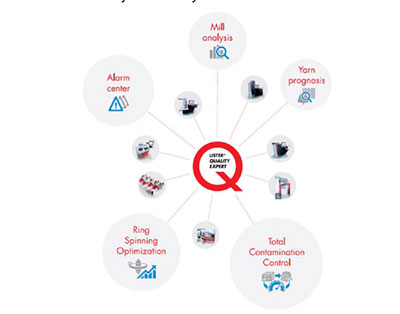 app connects users to quality and allows a fast information flow. From one single application, mobile devices receive early warnings about potential quality problems – as well as indications of the source of the issue and advice on saving raw material. Combined data from in-line and laboratory instruments, continuously analyzed by Assistant Q, keeps managers informed about quality issues in production and helps initiate immediate counter-measures.
app connects users to quality and allows a fast information flow. From one single application, mobile devices receive early warnings about potential quality problems – as well as indications of the source of the issue and advice on saving raw material. Combined data from in-line and laboratory instruments, continuously analyzed by Assistant Q, keeps managers informed about quality issues in production and helps initiate immediate counter-measures.
Uster Quality Expert opens up new horizons for process optimisation in the entire mill. Value modules in software combine to automate costly tasks, prevent faults and elevate process performance to the required quality level, constantly and reliably.
"The upcoming Maroc in Mode - Maroc Sourcing, to be held from October 17-18, 2019 in Marrakech, will offer international buyers and retailers a complete overview of the Moroccan textile and clothing industry by focusing on varied topics ranging from fast fashion to sustainable production."
The upcoming Maroc in Mode - Maroc Sourcing, to be held from October 17-18, 2019 in Marrakech, will offer international buyers and retailers a complete overview of the Moroccan textile and clothing industry by focusing on varied topics ranging from fast fashion to sustainable production.
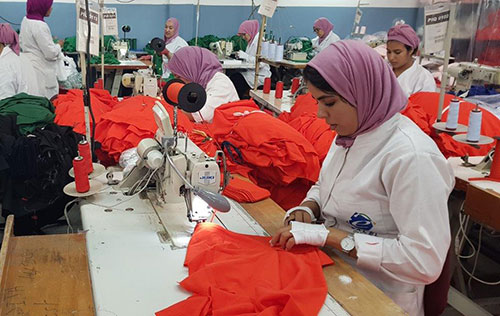
The fair will be organised by Amith, the Moroccan Textile Association in collaboration with the Moroccan Foreign Trade Ministry and AMDIE. More than 120 exhibitors will participate in the exhibition that will include segments like Fast Fashion, Denim, Knit, Tailoring, Lingerie, Corporate Fashion.
The importance of sustainability will be reflected in the conference program of exhibition that will discuss topics such as certification, sustainability, water use, etc.
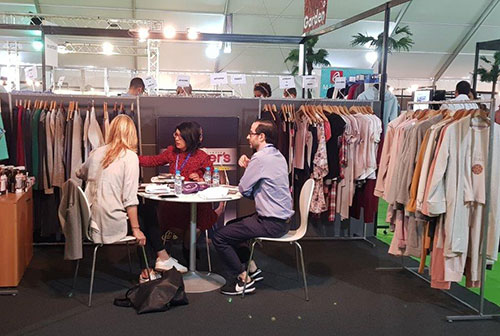
The Denim Cluster will present innovations in the Moroccan denim industry and target new projects around sustainable design, ecological processing, recycling and all new ideas for sustainable development.
With over 40 exhibitors, Fast Fashion will be the largest exhibition area. Its exhibitors will include companies like Advanced Distribution Services, Apparel Mills, Confetex Albo, Elite Sportswear, Filmod, New Line, Textile Harmony, Two One Clothing, Vita Couture, Yara Confection, Etc. The Maille/Knit area will present Bonneterie De L'atlas, Modatric, Sinmatex, Stradyconf, etc. In the Tailoring segment, specialists like Alize Group, Sefita, Etc., Services will be offered by A M D I, Casa Moda Academy, CTTH, ESITH, O F P P T, OETI, etc will present their collections.
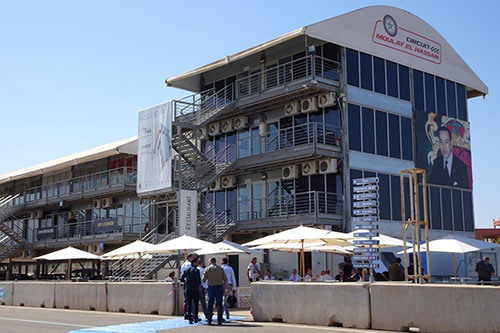
The Moroccan technical textile cluster C2TM that will exhibit in the EPI /Sportswear & Leisure segment will highlight Moroccan companies involved in the technical textile sector and new innovative collaborations in this field.
The program of the trade show will be complemented by B2B meetings at the "Espace Création“ – a trend area looking at selected themes of next year´s collections, conferences and panels on sectoral and current topics such as efficiency, sustainability, eco friendly fashion, improvement of the end product offering, financing and banks.
Even though the September-October period is known as the peak season for sale of rayon grey fabric in China, the market did not perform as well as expected. Production in weaving mills of Gaomi, Nantong and Shijazhuang surpassed sales leading to a lot of unsold inventory. Fabric mills in Shandong, Hebei, Shaanxi and Zhejiang shifted their production to polyester/rayon and interwoven fabrics as not only the demand for conventional fabrics shrank but even the supply exceeded demand and prices remained sluggish.
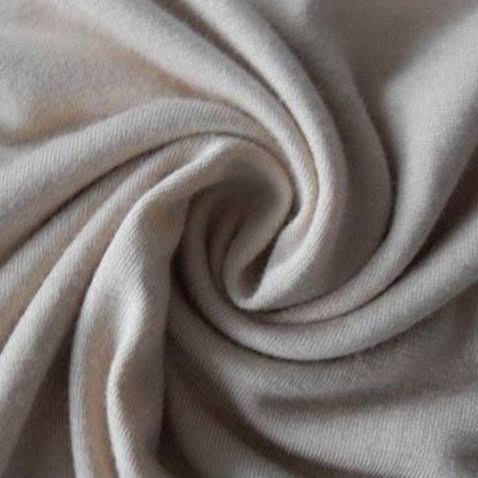 Even though the September-October period is known as the peak season for sale of rayon grey fabric in China, the market did not perform as well as expected. Production in weaving mills of Gaomi, Nantong and Shijazhuang surpassed sales leading to a lot of unsold inventory. Fabric mills in Shandong, Hebei, Shaanxi and Zhejiang shifted their production to polyester/rayon and interwoven fabrics as not only the demand for conventional fabrics shrank but even the supply exceeded demand and prices remained sluggish. The three days of holidays that weavers had in the mid-autumn festival further dampened their confidence towards the future growth prospects.
Even though the September-October period is known as the peak season for sale of rayon grey fabric in China, the market did not perform as well as expected. Production in weaving mills of Gaomi, Nantong and Shijazhuang surpassed sales leading to a lot of unsold inventory. Fabric mills in Shandong, Hebei, Shaanxi and Zhejiang shifted their production to polyester/rayon and interwoven fabrics as not only the demand for conventional fabrics shrank but even the supply exceeded demand and prices remained sluggish. The three days of holidays that weavers had in the mid-autumn festival further dampened their confidence towards the future growth prospects.
Changing demand and consumption patterns impacts production
The uncertain external environment and unstable feedstock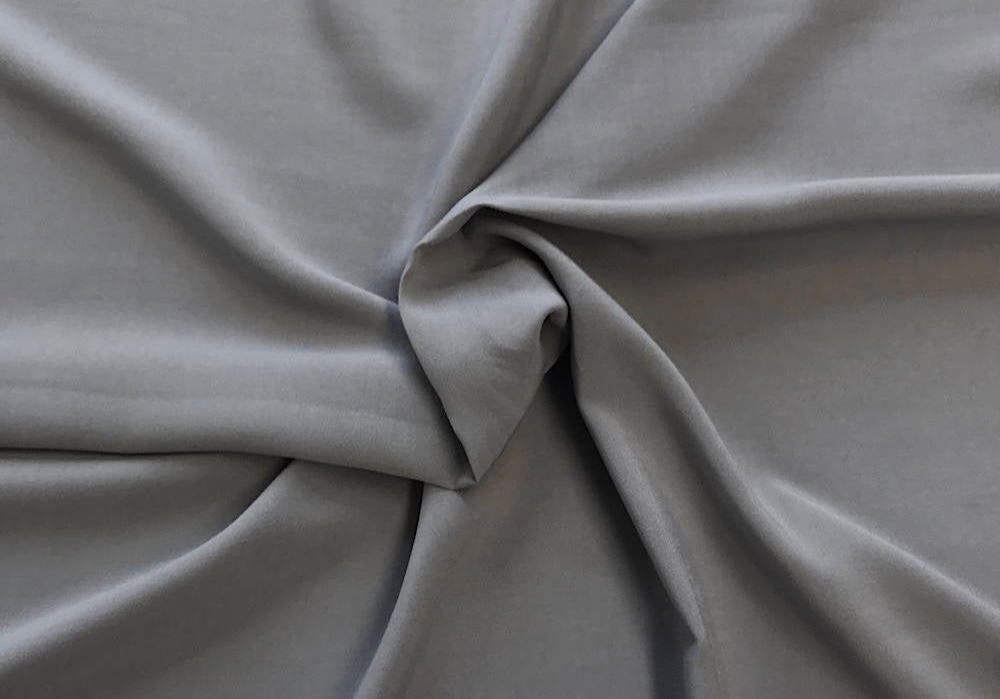 prices during the period compelled traders to remain on the sidelines. Though the market started improving from late-August, weavers still held a pessimistic view of the market as sales continued to be weak and prices remained sluggish. Besides external factors, the shrinking sales ratio of end-user products also affected the market.
prices during the period compelled traders to remain on the sidelines. Though the market started improving from late-August, weavers still held a pessimistic view of the market as sales continued to be weak and prices remained sluggish. Besides external factors, the shrinking sales ratio of end-user products also affected the market.
Changing demand and consumption patterns and a rapid follow-up of apparel production capacity in Southeast Asia has led to fast decline in apparel production in China in recent years. During the first half of 2019, apparel production dropped on basis of a large fall in 2018. From Jan to Dec of 2018, sale of apparels declined by 22.6 per cent to 22.274 billion garments while from Jan to Jun 2019, it declined by 1.09 per cent year-on-year to 10.413 billion garments.
Weavers adopt a cautious approach
Exports of cotton apparels also shrank rapidly. From Jan to Dec 2018, exports declined by 3.2 per cent to 13.03 billion pieces while from Jan to June 2019, they further declined to 6.07 billion pieces.
Some other factors that impacted the rayon grey fabric market in China were the intensification of trade protectionism and asymmetric advantages of textile and apparel in Southeast Asian countries. These led to a low demand from foreign importers further dampening the hope of weavers who are still selling only those stocks whose prices have stabilized.
Cheap viscose yarn is being dumped into India. The going had been good for spinning mills as demand for manmade fibers, especially viscose fiber, had been grown for the past four or five years, both in the domestic and international market. But over the past nine months, the picture has changed dramatically. With low import duties for viscose yarn, global producers have started dumping it in India, hindering the business of domestic spinning mills. These mills are bleeding as they have to sell their viscose yarn at cheap prices. The global economic slowdown and trade disputes between the US and China have resulted in excess stocks of viscose products in the market and a sharp drop in prices.
The duty differential between the fiber, yarn and fabric of viscose is what is causing the dumping of yarn by other countries in India. While the import duty on viscose fabric is 20 per cent and that on viscose fiber is 18 per cent, duty on viscose yarn is only five per cent. Coupled with the cheap price of viscose yarn in the global market, the low import duty has prompted Indian weavers to prefer it over the yarn from domestic spinners and buy it from traders who import it in bulk from China or Indonesia.
The value added of US textile manufacturing increased 25 per cent from 2009 to 2018. The size of the US textile and apparel industry has significantly shrunk over the past decades. However, textile manufacturing is gradually making a comeback. Textiles accounted for nearly 70 per cent of the total output of the US textile and apparel industry in 2018, up from 58 per cent in 1998. Clothing accounted for 12 per cent of total US fiber production by 2012, suggesting non-apparel textile products, such as industrial textiles and home textiles, have become a more important part of the industry.
However, manufacturing jobs are not coming back to the US textile and apparel industry. From January 2005 to August 2019, employment in US textile manufacturing and apparel manufacturing declined by 44.3 per cent and 59.3 per cent respectively. However, improved productivity is one important factor behind the job losses.
The US remains a net textile exporter and a net apparel importer. Over 40 per cent of US-made textiles were sold overseas in 2018, up from only 15 per cent in 2000. Meanwhile, from 2009 to 2018, the value of US yarns and fabrics exports increased by 31.3 per cent and 43.6 per cent respectively.
The US has imposed a 25 per cent tariff on fashion and textile products from the UK. The clothing and textiles of the UK affected by the decision include wool, cotton and cashmere sweaters, windbreakers and jackets, men’s and boys’ suits, women’s and girls’ pajamas, women’s and girls’ swimwear, blankets and bed linen.
Tariffs will apply even if the UK leaves the European Union with or without a deal. They are part of the ongoing dispute between the US and the EU over subsidies granted to Boeing and Airbus. The UK feels the US has imposed significant tariffs on products that have nothing to do with the aircraft dispute. The US is a key non-EU market for the UK. The US is the third largest export market for the UK behind Europe and Japan. This will have a major impact on the UK knitwear industry. Leading manufacturers will be hit by these punitive tariffs and that will affect jobs and investment. The US consumer happens to have a great affinity with high quality British knitwear.
The US believes subsidies paid by certain EU member states to French aircraft maker Airbus harmed the US industry. In the dispute, which began in 2004, the United States argued that the EU gave Airbus billions of dollars of launch aid that resulted in an unfair advantage for Airbus.
Global framework agreements are being used to boost union organizing, collective bargaining agreements and social dialogue. They are becoming a stronger tool for improving labor relations in the supply chain and combating violence and harassment in the garment sector. Gender-based violence, and particularly sexual harassment, is prevalent in the industry. Most garment workers are women and many are young and migrant workers, who are not aware of their rights. They have little access to safe housing and transportation, while the fashion industry generates excessive overtime, low pay, and long working hours.
Global framework agreements are negotiated at a global level between trade unions and a multinational company. They put in place the very best standards of trade union rights, health, safety and environmental practices, and quality of work principles across a company’s global operations, regardless of whether those standards exist in an individual country.
Trade unions are essential in ensuring that the global framework agreements are implemented in the global brands’ supplier factories. The increase of unionization rate in supplier factories is key to enable trade unions to monitor the agreements and to ensure that workers’ rights are respected in the global garment supply chain. Global fashion brands like Asos, Esprit and H&M have signed such agreements.
Around 18 Italian companies will exhibit at Expotextil that will be organised from October 24-27 in Peru by Italian Trade Agency and ACIMIT. These 18 exhibitors include Arioli, Biancalani, Bianco, Btsr, Danitech, Ferraro, Itema, Lawer, Marzoli, Mcs, Ms Printing Solutions, Proxima, Pugi Group, Ratti, Roj, Santex Rimar Group, Stalam and Ugolini.
In Peru, the textile and clothing industry is one of the leading sectors of the local economy. In fact, the country is the world's leading producer of alpaca fibers. It also cultivates cotton, especially in the northern area of the country. The sector is also supported by government programs aimed at increasing the quantity and quality of products made in Peru.
The textile industry in Peru has already benefited, over the years, from the partnership with Italian textile machinery manufacturers. Peru is the fourth largest market for Italian sales in South America. In 2018, sales of Italian textile machinery in the Country reached a value of around 10 million euros. Moreover, in the first four months of 2019 Italian exports to Peru increased by 8 per cent compared to the same period in 2018.
"Monforts Textilmaschinen GmbH & Co. KG will showcase an extensive range of coating and finishing technologies for the production of nonwovens and technical textiles at the forthcoming Techtextil India exhibition. The exhibition will be held at the Bombay Exhibition Centre in Mumbai from November 20-22, 2019."
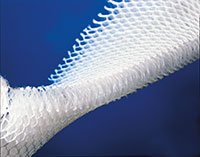 Monforts Textilmaschinen GmbH & Co. KG will showcase an extensive range of coating and finishing technologies for the production of nonwovens and technical textiles at the forthcoming Techtextil India exhibition. The exhibition will be held at the Bombay Exhibition Centre in Mumbai from November 20-22, 2019.
Monforts Textilmaschinen GmbH & Co. KG will showcase an extensive range of coating and finishing technologies for the production of nonwovens and technical textiles at the forthcoming Techtextil India exhibition. The exhibition will be held at the Bombay Exhibition Centre in Mumbai from November 20-22, 2019.
Hans Wroblowski, Head-Denim, says, “India is a very important market for Monforts and there are exciting prospects ahead for Indian manufacturers of technical textiles, who are well positioned to capitalise on growth opportunities.”
“India has one of the largest working-age populations in the world and a complete textile value chain for both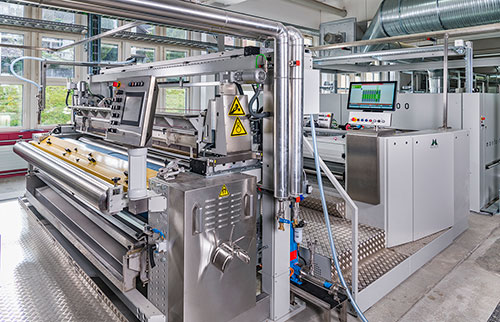 natural and synthetic fibres. In addition, its government has been actively promoting the growth of technical textiles through various programmes based on investment promotion, subsidies, the creation of infrastructure and the stimulation of consumption,” he adds.
natural and synthetic fibres. In addition, its government has been actively promoting the growth of technical textiles through various programmes based on investment promotion, subsidies, the creation of infrastructure and the stimulation of consumption,” he adds.
As a result, India’s Ministry of Textiles forecasts technical textiles in the country to grow by over 18 per cent annually to US$28.7 billion in 2021.
Monforts texcoat range includes high value-added technical products such as wide-width digital printing substrates, carbon fabrics for high-performance composites, filter media, flame retardant barrier fabrics and heavy-duty membranes.
The texCoat user interface is equipped with the unique Monforts visualisation system and the magnetic doctor blade has greater power reserves. Options include a carbon fibre-reinforced composite coating drum with a more scratch-resistant surface and maximum rigidity and remote control which simplifies exact adjustment for the operator.
Montex stenters in special executions are ideal for the drying and finishing of both technical woven fabrics and nonwovens and characterised by high stretching devices in both length and width.
Pakistan’s textile exporters are facing a difficulty because of a delay in refunds. They are facing liquidity and cash flow problems and are unable to fulfill their export commitments. Exporters were given assurances the new refund system would be user-friendly and refunds would be processed without human involvement. A refund system for five export sectors was introduced by which sales tax refunds for exporters were be paid within 72 hours. However this system is a very cumbersome and complicated process.
As of now only 0.15 per cent of sales tax claims have been approved. The industry says the sales tax percentage may be increased gradually for the five export sectors, if refunds are paid within the specified time. In addition exporters want an enabling business environment and a level-playing field. Pakistan’s textile exports remained flat during the first five months of the current fiscal year as the value-added sector couldn’t perform up to the mark despite the constant currency devaluation against the dollar. This export sector is the backbone of Pakistan’s economy and earns a major amount of foreign exchange and revenue. Besides, the sector is also labor-intensive and the largest employment provider and generator. Value-added textile exporters say they are battling for their survival in the global market due to costly inputs and high cost of manufacturing.












